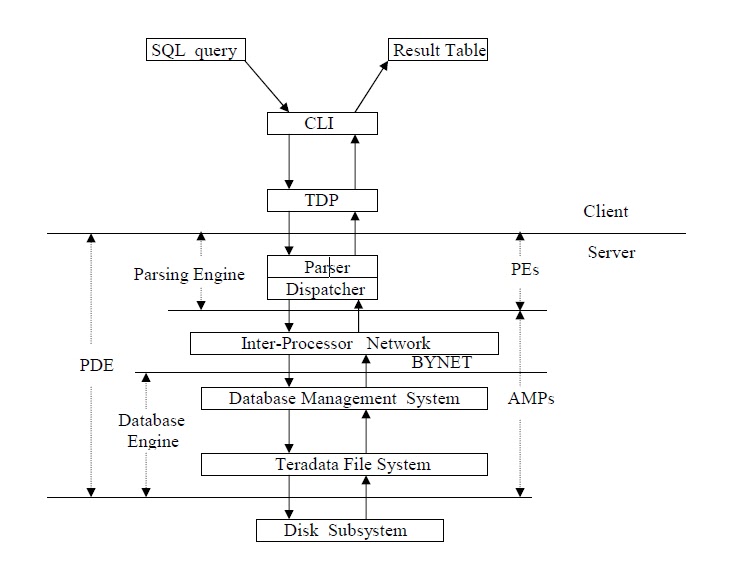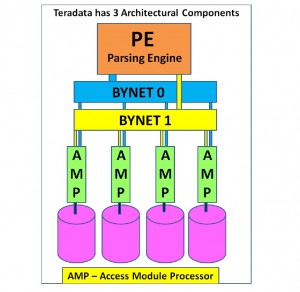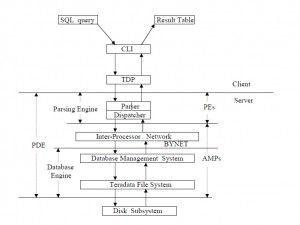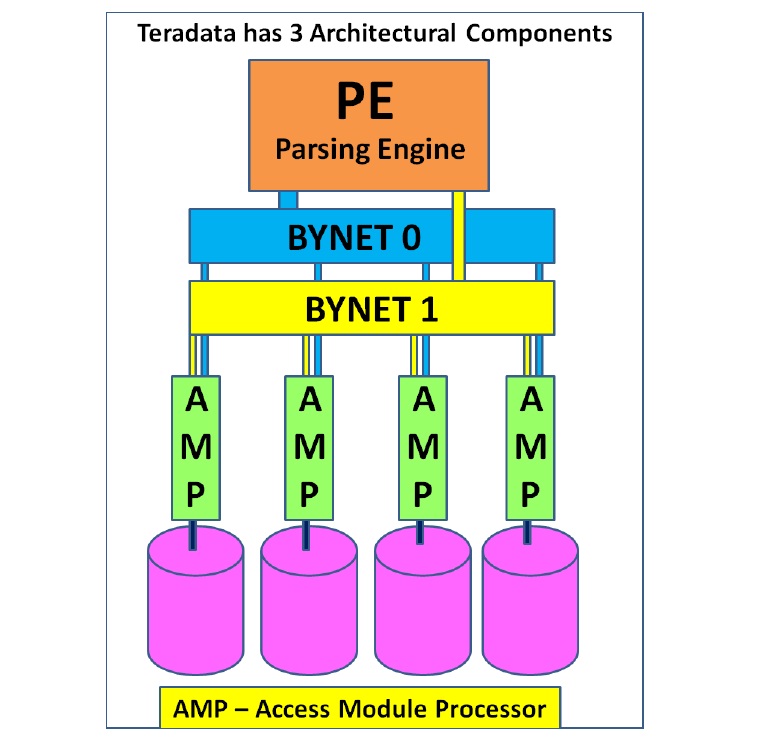Teradata and It’s unique features
The Teradata database is a massively parallel processing system running a “shared nothing” architecture.
The origin of the name Teradata is ‘tera’ derived from Greek which means ‘trillion’.
It is the first commercial database to support a trillion bytes of data.
Unique features
–> Parallel architecture
The Teradata Database provides exceptional performance using parallelism to achieve a single answer faster than a non-parallel system. Parallelism uses multiple processors working together to accomplish a task quickly. makes Teradata Database faster than other relational systems.
–> Single datastore
The Teradata Database acts as a single data store, instead of replicating database for different purposes with the teradata database we can store the data once and use it for all applications. The Teradata database provides same connectivity for all systems.
• supports the requirements of many diverse clients.–> Scalability
Scalability is nothing but we can add components to the system, the performance increase as linear. Scalability enables the system to grow to support more users/data/queries/complexity of queries without experiencing performance degradation.
–> capacity
includes:
• Scaling from Gigabytes to Terabytes of detailed data stored in billions of rows.
• Scaling to thousands of millions of instructions per second (MIPS) to process data.



